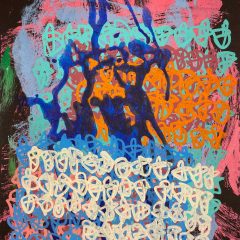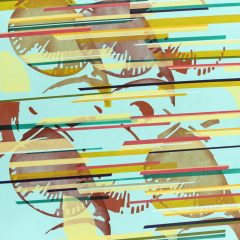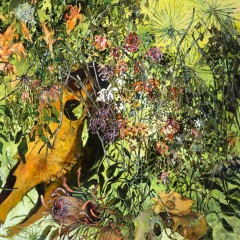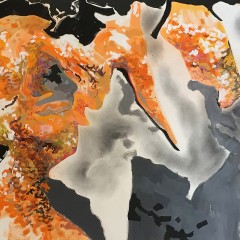In the “Rime of the Ancient Mariner,” the albatross is an omen of both good and bad luck. Taking the seafaring bird as its title, Rebecca Saylor Sack’s latest body of work also revels in ambiguity. On view at Seraphin Gallery until March 25, the paintings in Albatross suggest creation and destruction.
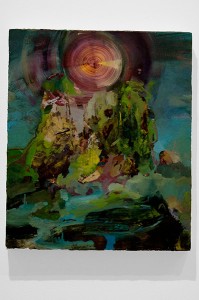
While these themes are evident in the artist’s large, titled works, the show also includes small, untitled, material studies using oil bar and spray paint. In the studies, the oil bar is used to add shine and dimensionality to the flat spray paint. These studies are primarily concerned with the interaction of the two materials, but in the exhibition’s large works, the sweeping, bodily gestures used to apply spray paint and oil paint are visible.
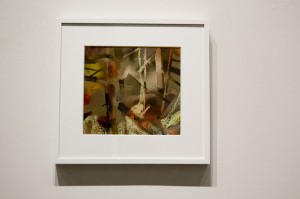
The paintings of Albatross are inspired by the surrealist text, “The Solar Anus,” which also focuses on the violence of creation. In each of the large abstractions, landscape imagery is presented in convoluted forms that recall natural disasters. Rebecca Saylor Sack’s largest untitled work lacks a discernible horizon line, making the viewer’s position uncertain. At the center of the composition, there is a spiraling form that resembles a vortex and appears to be pulling each brushstroke toward the center.
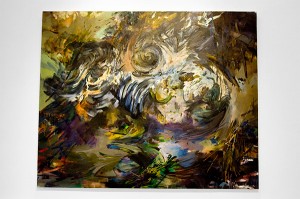
The painting’s forest palette of blues, greens, browns, and purples is also used in the work entitled, “Thunder splits the rift where the sun comes in.” In this scene, the spiraling vortex appears again. However, it defies logic by hovering in the tree line above a small body of water.
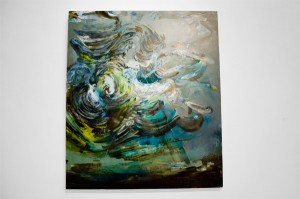
In “The sea says what the sea says to everyone,” gigantic waves loom ominously in the sky dwarfing the land below. Again, their placement defies logic, and the waves take on a supernatural presence. A cosmic power is also suggested in the work, “Tower,” in which a circular form hovers above the landscape and appears to pulsate with energy.
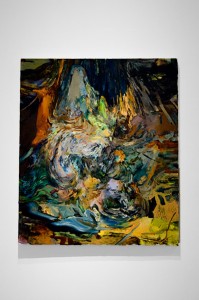
In “Coldhands” and Baitball,” the scenes are more fantastical and chaotic. These two works also share similar color palettes of energetic blues, greens, yellows, and oranges adding to the feeling of disorder. In “Coldhands,” twisted forms span the landscape, creating a path of destruction. A baitball is a formation used by a school of small fish to appear larger. A similarly clustered form also appears in the painting of the same name. Engulfed in the chaotic scene, the baitball becomes a metaphor for the individual’s struggle in nature.
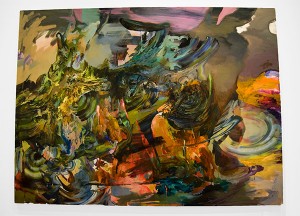
The nine works in Albatross highlight Rebecca Saylor Sack’s skill as a painter and her interest in process. The poetry and literature that serve as her inspiration are evidence of an artist thinking about more than painterly concerns. But even at nine images, some of the works become repetitive.


